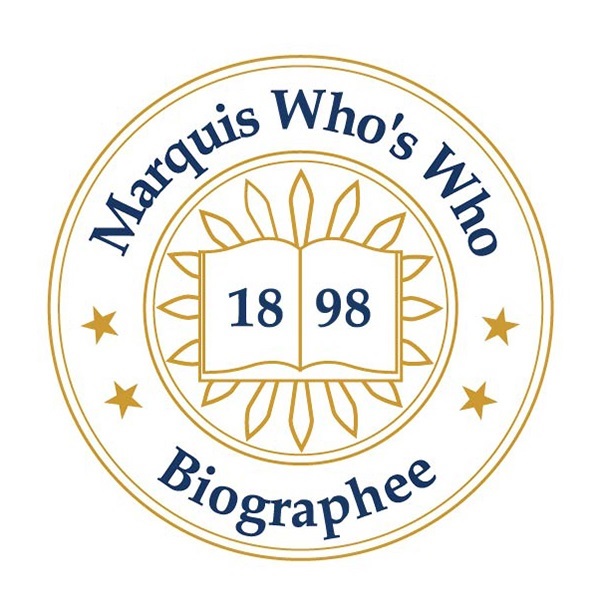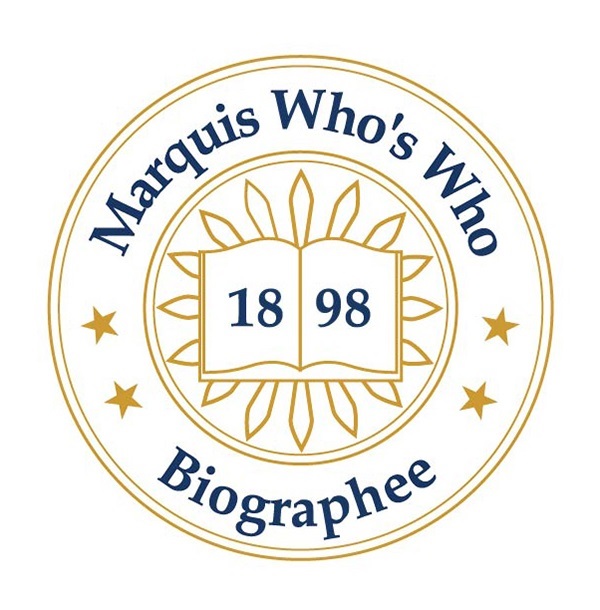Dr. Murphy has been a professor at the Annenberg School for Communication and Journalism at the University of Southern California (USC) for over 30 years.
MARINA DEL REY, CA, June 14, 2024 /24-7PressRelease/ — Sheila T. Murphy, PhD, has been included in Marquis Who’s Who. As in all Marquis Who’s Who biographical volumes, individuals profiled are selected based on current reference value. Factors such as position, noteworthy accomplishments, visibility, and prominence in a field are all taken into account during the selection process.
Trained as a Social Psychologist at the University of Michigan, Dr. Murphy has been a professor at the Annenberg School for Communication and Journalism at the University of Southern California (USC) for over 30 years. Driven by curiosity, she researches how individual-level factors (e.g., ethnicity, gender, sexual orientation, medical history, etc.), interpersonal factors (e.g., social support and networks), community-level factors (e.g., local healthcare assets) and cultural-level factors (e.g., social norms and beliefs, etc.) impact decision-making. More recently, she has focused on the role of narrative or storytelling in shaping the public’s knowledge, attitudes, and practices and the factors such as identification with characters, transportation into the story, and viewing conditions such as binging that can increase or decrease a story’s impact.
Domestically, Dr. Murphy and her colleagues at Hollywood, Health & Society (HH&S) at the Norman Lear Center which is also housed at the Annenberg School of Communication at USC have conducted large-scale content analysis of the health content of popular primetime television programs as well as evaluated the impact of numerous health storylines on popular television (including Grey’s Anatomy, Desperate Housewives, ER, Law & Order, Chicago Med, East Los High and several Spanish language telenovelas on Telemundo and Univision).
Internationally, Dr. Murphy has worked probono on a variety of Entertainment Education (EE) projects in which health information was deliberately embedded into popular programming with the express purpose of promoting a particular health outcome such as condom normalization in India with the BBC and anti-sex trafficking with MTV in Indonesia (funded by USAID) and increasing the social value of girls in Rwanda and Ethiopia.
In 2010, Dr. Murphy was awarded a National Institutes of Health Transformative TR01 “Transforming Cancer Knowledge, Attitudes and Behaviors through Narrative” (1 R01 CA 144052-03 Murphy/Baezconde-Garbanati) that looked at the role of narrative in cancer education with an emphasis in cervical cancer. This 5-year grant aimed to challenge the underlying assumption that the traditional recitation of the facts is the optimal way to convey health-related information. To test empirically whether utilizing a narrative format (compared to a non-narrative format) might produce a stronger and more sustained impact on knowledge, attitudes, and prevention behavior, our team produced two short films each 11 minutes in length and both containing the same 10 facts regarding cervical cancer prevention, detection and treatment. Tamale Lesson (http://tinyurl.com/kxxzyd6) conveys facts regarding the cause of cervical cancer, as well as how to prevent it (via the HPV vaccine) and detect it (via Pap tests) using a Mexican American family’s preparation for their youngest daughter’s quinceañera or 15th birthday as the narrative vehicle. The non-narrative film, It’s Time (http://tinyurl.com/mzgcr3o), contains the same 10 facts but uses a more traditional approach featuring doctors, patients, facts, and figures.
The relative efficacy of these two films was tested by first surveying 1,000 randomly selected women between the ages of 25-45 living in Los Angeles (300 African American, 300 European American, 300 Mexican American and 100 Korean American) to establish a pretest baseline level of cervical cancer-related knowledge, attitudes and behavior, randomly assigning these same women to receive either the narrative or non-narrative film and then resurveying them two weeks and then six months later. The results of this large-scale quasi-experimental study revealed that the narrative was indeed more effective in increasing cervical cancer-related knowledge, attitudes and increasing actual cervical cancer screening rates by the six-month follow-up. Moreover, the six-month follow-up data revealed that the narrative virtually erased the ethnic disparity in cervical cancer screening rates that existed at baseline (where the European American women in our sample were far more likely to have been recently screened (47%) than Mexican American respondents (32%). By the six-month follow-up, Mexican American respondents exposed to the narrative went from having the lowest rate of screening to the highest (from 32% to 82%). This suggests that narrative formats may provide an invaluable and underutilized tool in reducing health disparities. These results have been published in the American Journal of Public Health in a special issue on using randomized trials to reduce health disparities (Murphy, Frank, Chatterjee, Moran, Zhao, Amezola de Herrera & Baezconde-Garbanati (2015, American Journal of Public Health) Comparing the relative efficacy of narrative versus non-narrative health messages in reducing health disparities using a randomized trial (http://tinyurl.com/mg5faj3).
Building on earlier work (looking at the impact of a lymphoma storyline on Desperate Housewives see Murphy, Frank, Moran and Woodley (2011) we examined how the efficacy of a narrative can be moderated by not only demographic factors such as age, income and ethnicity but by theoretical factors such as identification with specific characters and feeling “transported” or engrossed in the narrative. In response to the narrative featuring Latinas, Mexican Americans were most transported, identified most with the characters, and experienced the strongest emotions. Regressions revealed that transportation, identification with specific characters, and emotion contributed to shifts in knowledge, attitudes, and intent to be screened for cervical cancer. These results call for a re-examination of the prevailing “one-size-fits-all” assumption that guides most health messages and instead looks at the role of culture and acculturation in the acceptance of health messages. These results have been published in a special issue of the Journal of Communication – Health Communication Strategies to Reduce Health Disparities – in an article entitled “Narrative versus Nonnarrative: The role of identification, transportation, and emotion in reducing health disparities” (Murphy, Frank, Chatterjee, & Baezconde-Garbanati, 2013, http://tinyurl.com/lkp7f2w). Her team also examined the role played by perceived social norms (perceptions of what similar others are doing) in moderating the effect of narratives (Frank, Murphy, Chatterjee, Moran, & Baezconde-Garbanati (2015) Telling stories, saving lives: Creating narrative health messages. Heath Communication, 30(2), 154-163).
Although the TRO1 research focuses on cervical cancer, the results have clear implications for virtually all health communication; if successful, it could radically change how health messages are conveyed. “Tamale Lesson” won the 23rd Annual American Public Health Association’s Public Health Education and Health Promotion Award, The National Institutes of Health Common Fund 10-Year Commemoration Award which was presented by Francis Collins. This work, proved to a skeptical medical system that stories can convey vital health information sometimes better than a talking head reciting facts, that Murphy received the 2015 Everett M. Rogers Award given to “an individual who has made an outstanding contribution to advancing the study and/or practice of public health ion communication” by the American Public Health Association and was awarded the distinguished rank of “Fellow” of the International Communication Society.
In early 2020, Dr. Murphy and her colleagues at USC who worked together on fighting cervical cancer with Tamale Lesson were asked to lend their talents to fighting misinformation surrounding the COVID vaccine. During the early months in the United States, the per capita death rate for Black Americans was twice as high as the white death rate. The Latino death rate was substantially lower than the Black rate but still above average. These large racial gaps were predicted to persist throughout the pandemic, especially because white and Asian Americans were initially quicker to receive vaccine shots. Black and Latino Americans, by contrast, not only had less convenient access to the vaccine but they were more skeptical of the vaccine.
But these large racial gaps in vaccination did not continue, and as a result neither did the gaps in COVID-19 deaths. This was due at least in part to the efforts of VaccinateLA, who supported Jeremy Kagan, Lourdes Baezconde-Garbanati and Sheila Murphy’s Telling Stories, Saving Lives project that worked with young Latino and African American filmmakers trained at USC School of Cinematic Arts to create three short films that debunk common myths that underlie vaccine hesitancy in those specific populations as well as parents of children.
Of Reasons and Rumors follows a tight-knit Latino family in East LA who disagree about the importance and safety of COVID-19 vaccination.
English: https://www.youtube.com/watch?v=7RdUSiB08J8&t=2s
Spanish: https://youtu.be/PI22Z-uitLU
Happy Birthday, Granny revolves around an African-American family in South LA celebrating their grandmother’s birthday when an argument leads to an honest discussion about the truth about the development and safety of the COVID-19 vaccine.
https://www.youtube.com/watch?v=jyBkpWQble4
Team Player As a soccer game begins, parents and kids deal with resistance to COVID-19 vaccinations with humor and empathy to overcome misinformation and myths.
https://vimeo.com/679763639/0cfc1c62b6
These three culturally tailored short films counter prevalent myths and encourage COVID-19 vaccination. These films have been nationally distributed in both English and Spanish to 34 states and are responsible for over a million shots in arms. The final film Team Player has been adopted by LA Unified the country’s second-largest school district to increase student vaccination. As a result of VaccinateLA’s efforts and community outreach vaccinations in Los Angeles County were 30% higher than expected.
Despite the achievements listed above, Dr. Murphy, considers her students to be her greatest contribution to society. She has successfully mentored and chaired the doctoral dissertations of over 30 PhD students, many of whom have become professors themselves at institutions including Northwestern University, Johns Hopkins University, University of California at Santa Barbara, San Diego, Davis, Los Angeles, and Berkley campuses and internationally at Universities in Bangkok, India, Great Britain, and Israel. Other students have gone on to make remarkable contributions to both governments and nonprofits around the world.
About Marquis Who’s Who®:
Since 1899, when A. N. Marquis printed the First Edition of Who’s Who in America®, Marquis Who’s Who® has chronicled the lives of the most accomplished individuals and innovators from every significant field of endeavor, including politics, business, medicine, law, education, art, religion and entertainment. Who’s Who in America® remains an essential biographical source for thousands of researchers, journalists, librarians and executive search firms around the world. The suite of Marquis® publications can be viewed at the official Marquis Who’s Who® website, www.marquiswhoswho.com.
# # #





